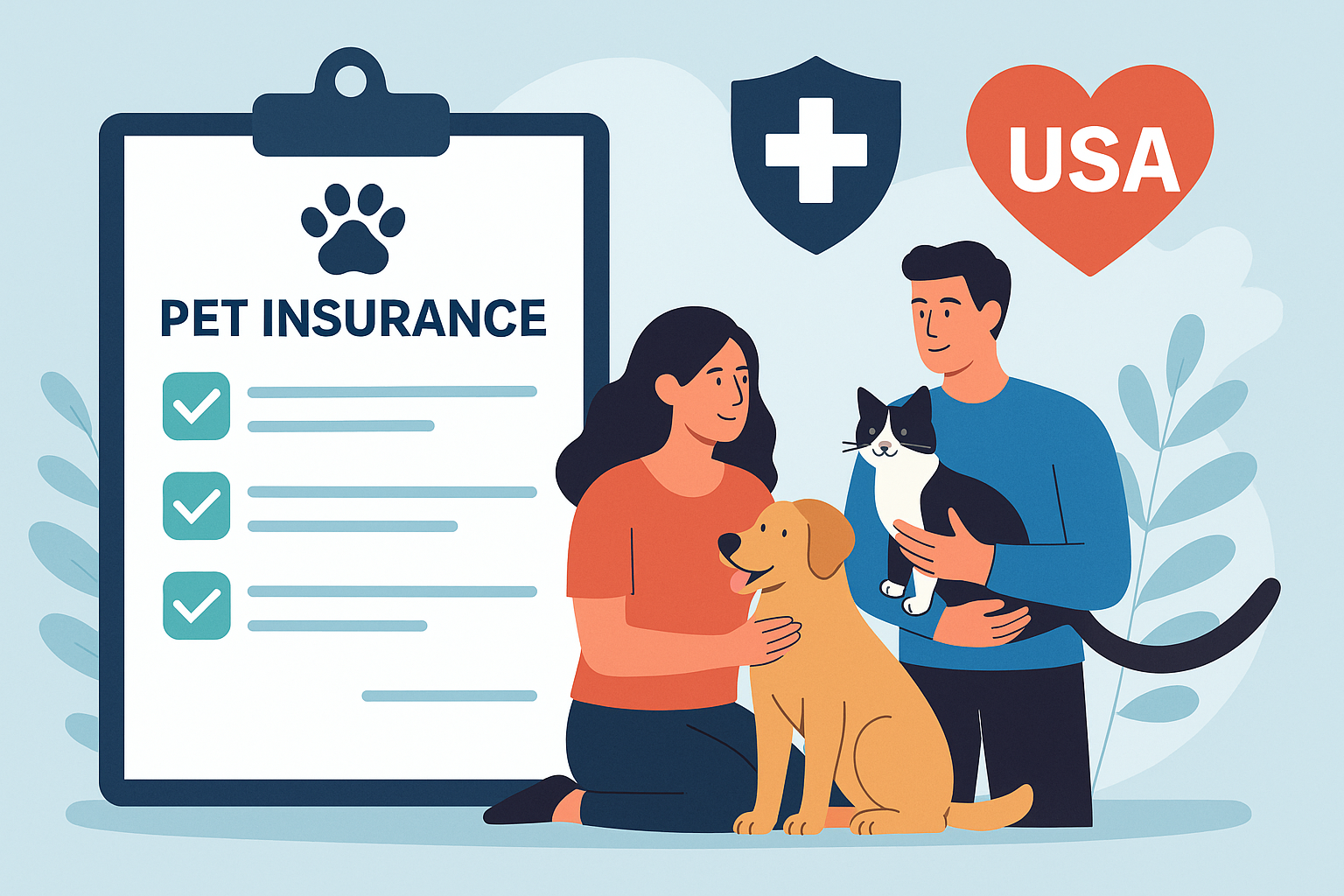Understanding Pet Insurance in the USA
Pet insurance helps cover vet bills. It’s like human health insurance but for pets. It pays back a part of your pet’s medical costs for accidents, illnesses, and sometimes routine care.
In the USA, more people are getting pet insurance. This is because vet costs are going up. Insurance makes it easier to get your pet the care they need.
Why You Might Need Pet Insurance
Rising Veterinary Costs
Vet bills can be very high. Things like surgery, chemotherapy, or MRIs can cost thousands. Without insurance, these bills can be hard to handle.
Accident and Illness Protection
Accidents or illnesses can happen anytime. Pet insurance helps you afford the care your pet needs. It keeps you from having to choose between your pet and your wallet.
Pros and Cons of Pet Insurance
| Pros | Cons |
|---|---|
| Reduces financial burden during emergencies | Monthly premiums add up |
| Gives access to better treatment options | Some policies have exclusions |
| Peace of mind for pet parents | Upfront payment required before reimbursement |
Top Pet Insurance Providers Compared
Finding the right insurance can be hard. Here’s a look at the top providers for 2025:
| Provider | Highlights | Average Cost/Month | Best For |
|---|---|---|---|
| Healthy Paws | Unlimited lifetime benefits | $30–$50 | Comprehensive coverage |
| Trupanion | Direct vet payments, no payout limits | $40–$70 | Chronic conditions |
| Lemonade Pet Insurance | Fast claims, customizable plans | $10–$35 | Budget-conscious owners |
| ASPCA Pet Health Insurance | Extensive wellness coverage | $20–$50 | Routine care |
Healthy Paws
Known for unlimited coverage and simple policies. No caps on claims—ever!
Trupanion
Unique for paying vets directly and covering chronic illnesses for life.
Lemonade Pet Insurance
Affordable, tech-driven, and quick with reimbursements via their app.
ASPCA Pet Health Insurance
Comprehensive plans that include dental cleanings, vaccines, and annual checkups.
How Much Does Pet Insurance Typically Cost?
Pet insurance for dogs costs between $30 and $70 a month. Cats are cheaper, costing $15 to $40. Costs vary based on breed, age, and location.
Key Factors to Consider When Choosing Pet Insurance
Coverage Details
Always check what’s included. Some policies exclude hereditary conditions or limit coverage for older pets.
Reimbursement Rates and Deductibles
A higher reimbursement rate sounds great but usually means a higher monthly premium. Deductibles can be per year or per condition.
Waiting Periods
Most insurers need a waiting period before they start covering your pet. Accident coverage usually starts after 2 days. But, illnesses might take up to 14 days to be covered.
FAQs About Pet Insurance in the USA
Q1: Does pet insurance cover pre-existing conditions?
A: No, most providers exclude pre-existing conditions.
Q2: Can you get pet insurance for older pets?
A: Yes, but premiums are higher, and some companies have age limits.
Q3: What’s usually excluded from pet insurance?
A: Cosmetic procedures, breeding costs, and preventive care (unless added).
Q4: How do reimbursements work?
A: Typically, you pay the vet upfront, file a claim, and get reimbursed later.
Q5: Is dental care covered by pet insurance?
A: Some plans include dental illnesses; wellness add-ons can cover routine dental cleanings.
Q6: Is pet insurance worth it if my pet is healthy?
A: Absolutely—accidents or sudden illnesses can happen without warning.
Conclusion: Is Pet Insurance Worth It for You?
Pet Insurance in the USA: Is It Worth It? Top Providers Compared shows insurance offers peace of mind. It also gives access to better treatments and a financial safety net. While it costs upfront, the savings during emergencies can be huge. For your pet and your wallet, it’s worth it. Carefully review plans and providers to find the best fit for your furry friend!














